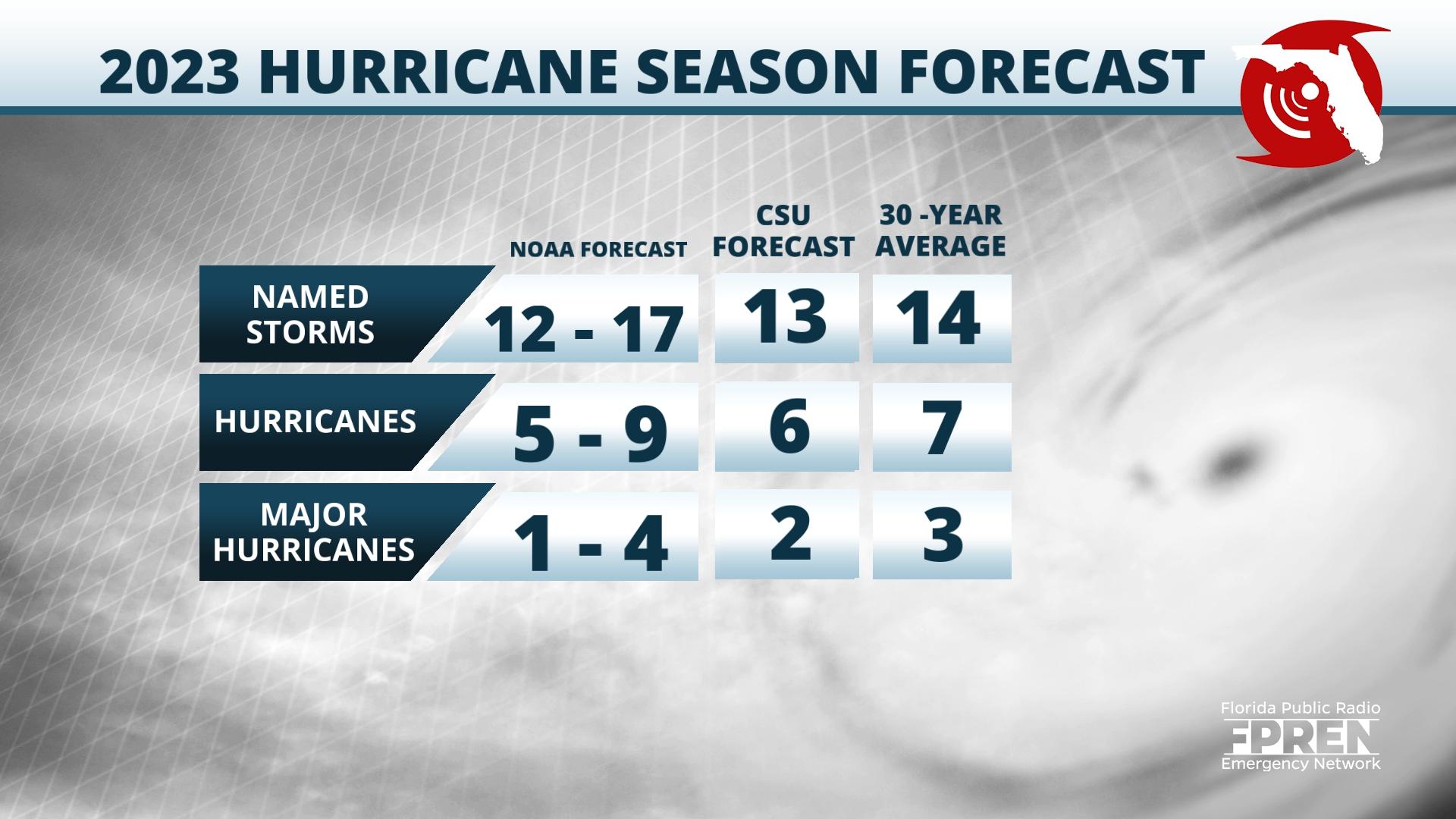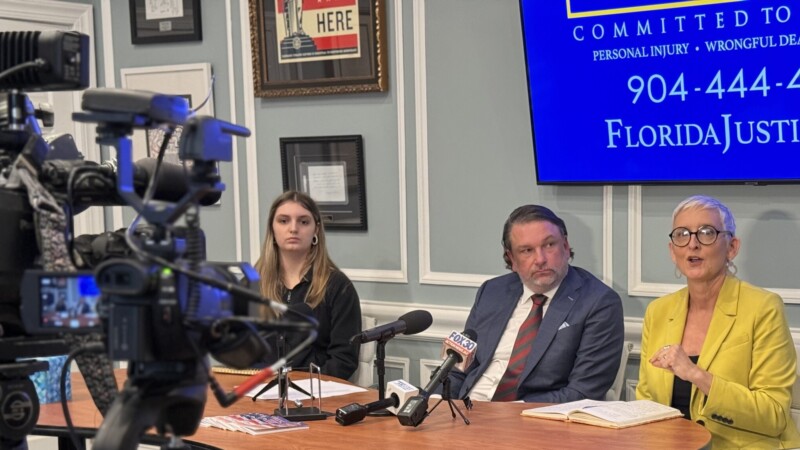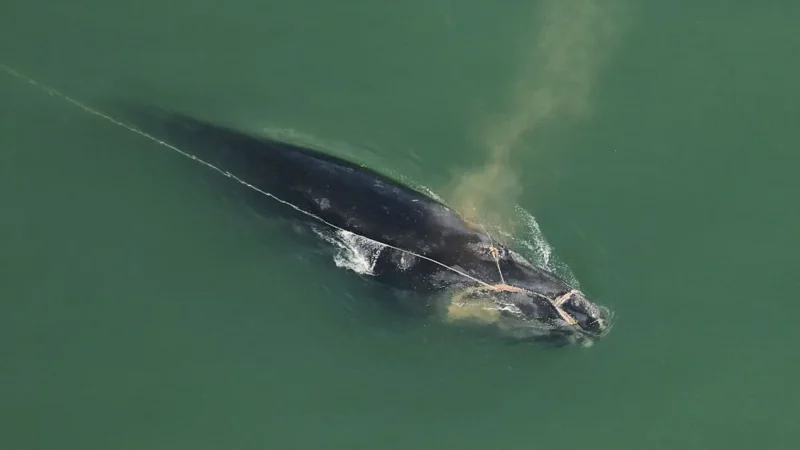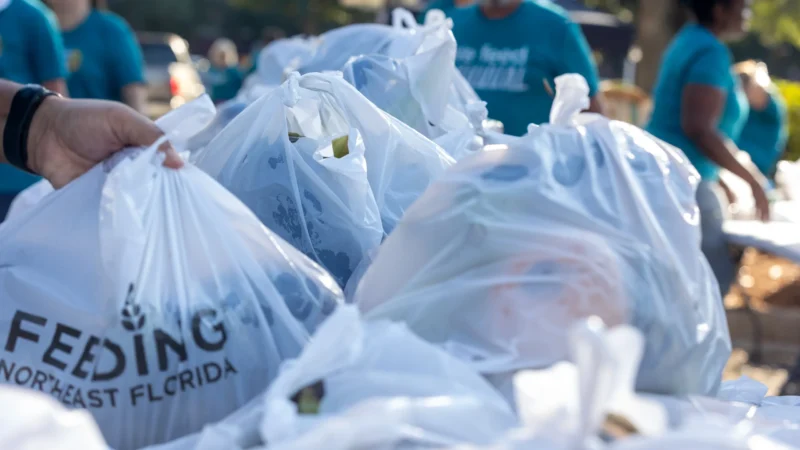Experts at the National Hurricane Center have released their outlook for the upcoming hurricane season. Their forecast? A near average season.
On Thursday morning, NOAA Administrator Dr. Rick Spinrad said the upcoming hurricane season, which officially begins June 1, would most likely contain a near average frequency of storms. Typical seasons contain about 14 named storms, seven of them hurricanes and two of them major hurricanes.
The preliminary forecast from the National Hurricane Center predicts 12 to 17 named storms, five to nine of them hurricanes and one to four major hurricanes.
This forecast is similar to one released by the Colorado State University Tropical Weather and Climate Research group in April. That report also called for near average or just below average storm frequencies: Six hurricanes (including two major hurricanes) and seven tropical storms for a total of 13 named storms.

Both the CSU and NOAA forecasts only provide information on storm frequency. Details such as when storms will develop, where they will track, and if they will make landfall are not able to be forecasted this far in advance.
Seasonal forecasts, like those for hurricane season, are guided primarily by global climate signals. The predominant features analyzed for the Atlantic hurricane season include the phase of the El Niño Southern Oscillation — or ENSEO — and sea surface temperatures, or SSTs.
Fairly recently, a longstanding La Niña shifted to ENSO neutral conditions, and probabilities are high that an El Niño will develop during the summer and autumn months. The presence of El Niño in the Pacific can translate to elevated levels of wind shear in the Atlantic, which can inhibit tropical development/intensification.
However, SSTs over the tropical Atlantic continue to be anomalously warm, and such conditions could promote and sustain tropical development. The disparate influences of ENSO phase and SSTs result in the call for a near normal Atlantic hurricane season

This forecast announcement comes while experts at the National Hurricane Center are already monitoring the Atlantic for possible development. An area of low pressure is developing along Florida’s Atlantic coast, and as the center deepens, it could acquire tropical characteristics, although the probability of that is quite low.
Regardless, this system is expected to create hazardous conditions, including dangerous surf, beach erosion, gusty winds, and flooding rainfall rates along the Southeast and Mid Atlantic coasts this Memorial Day weekend.
Officials and experts urge that as the official start of hurricane season looms families and businesses, including those well inland, assess their risk and determine what they would need to weather a natural disaster. Interests should develop shelter-in-place and evacuation kits and procedures. Preparations made well in advance of natural disasters can help to mitigate physical, mental, and financial impacts.
Regardless of storm frequencies (or even storm strength) this hurricane season, it is important to remember that just one system can severely impact your community with flooding rains, storm surge flooding, damaging winds and tornadoes. Additional information to help assess risk and to aid in preparative efforts can be found at https://www.floridadisaster.org/.
9(MDEwNzczMDA2MDEzNTg3ODA1MTAzZjYxNg004))






